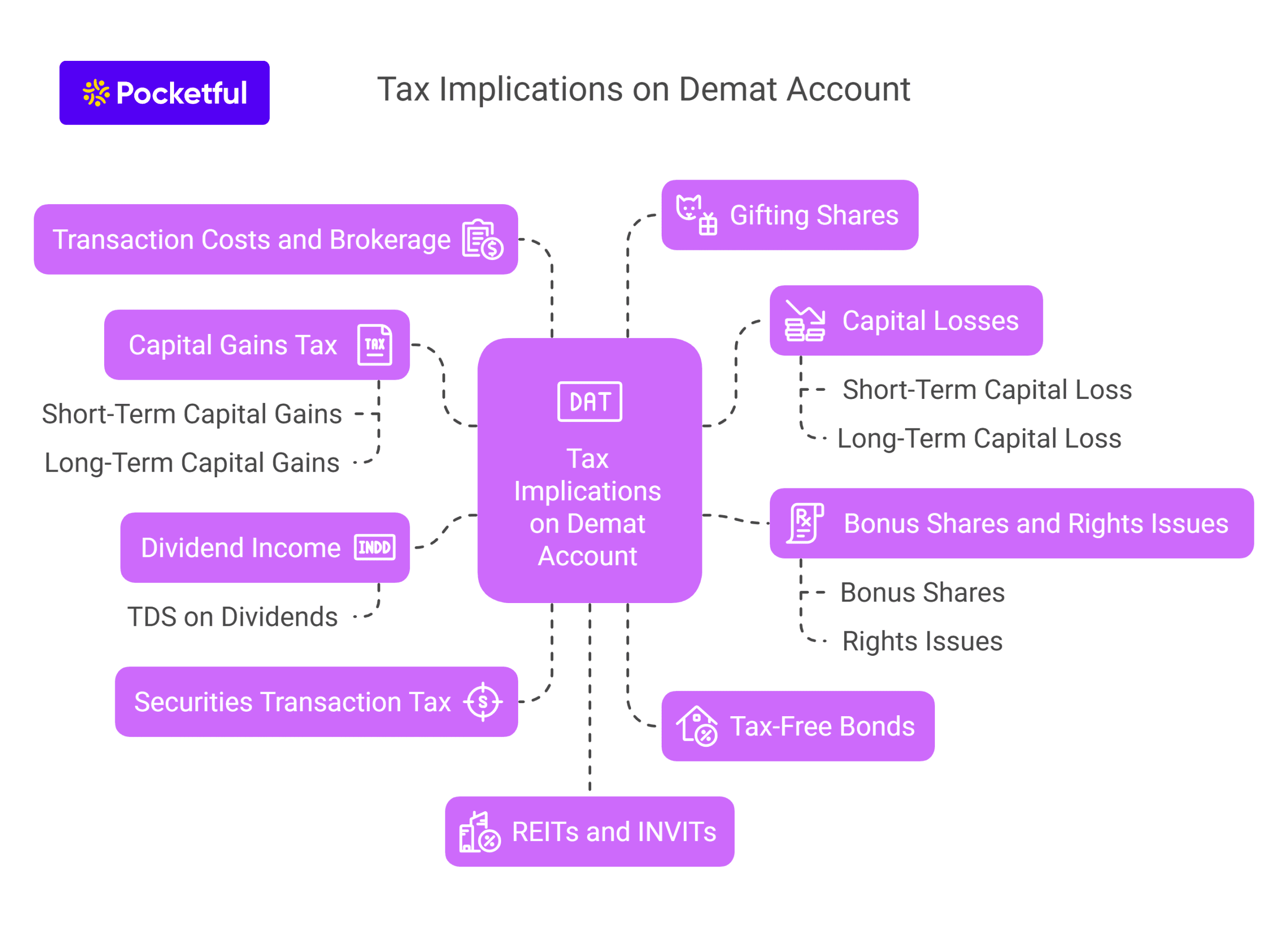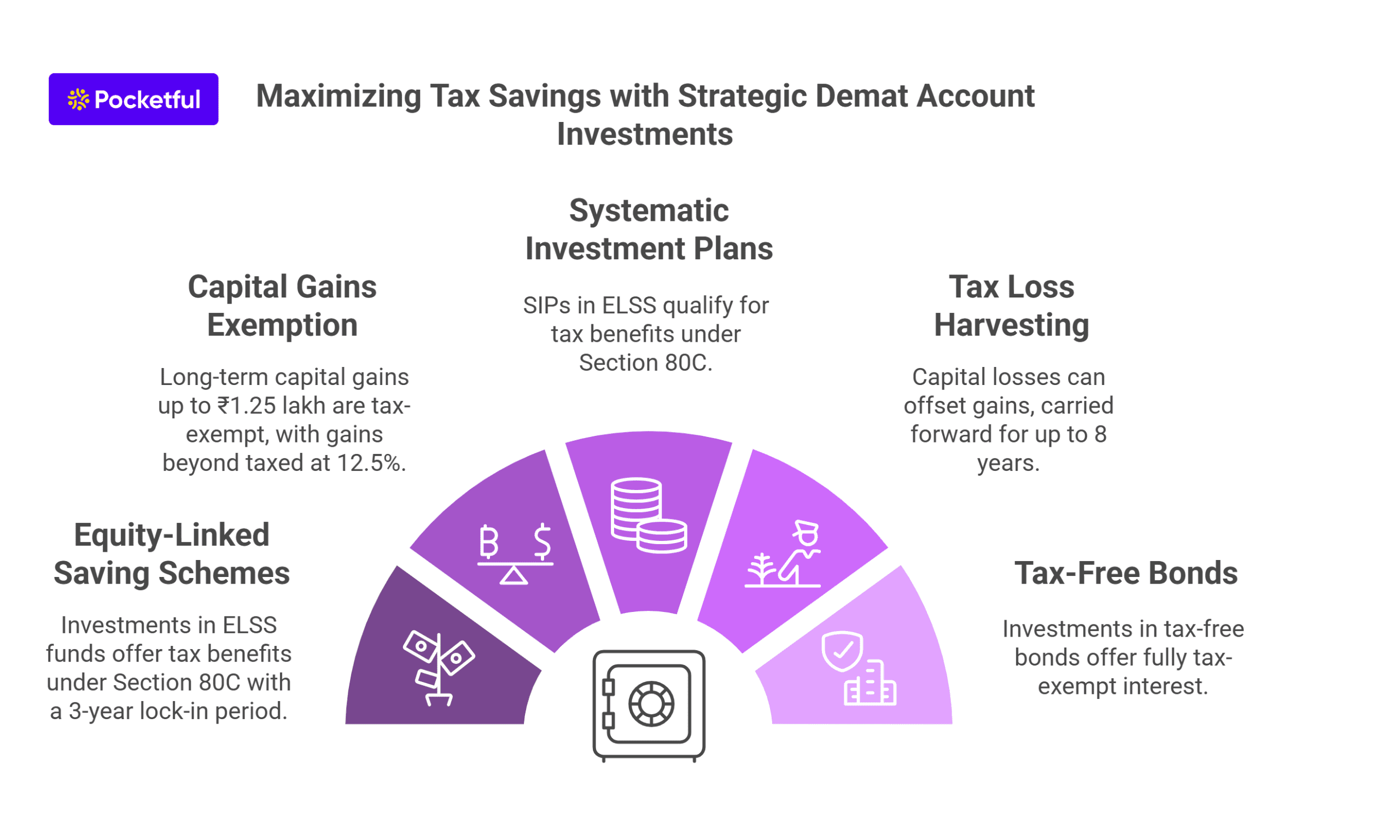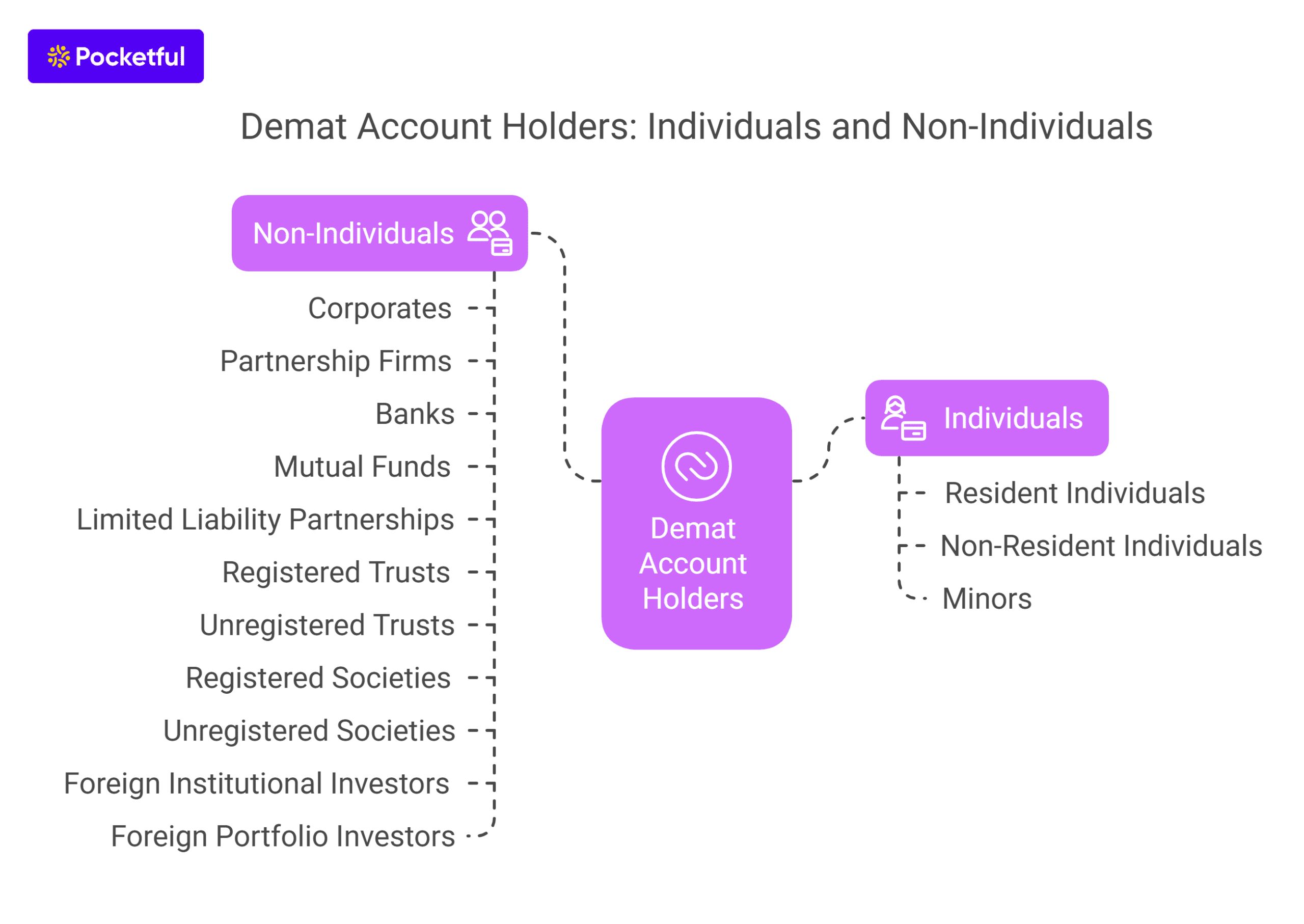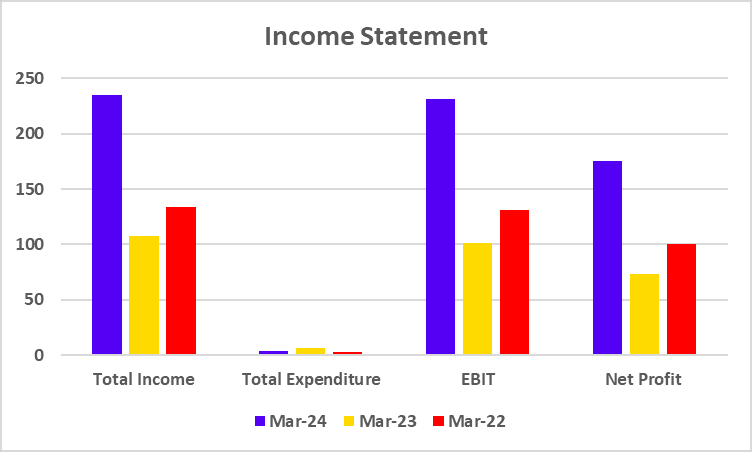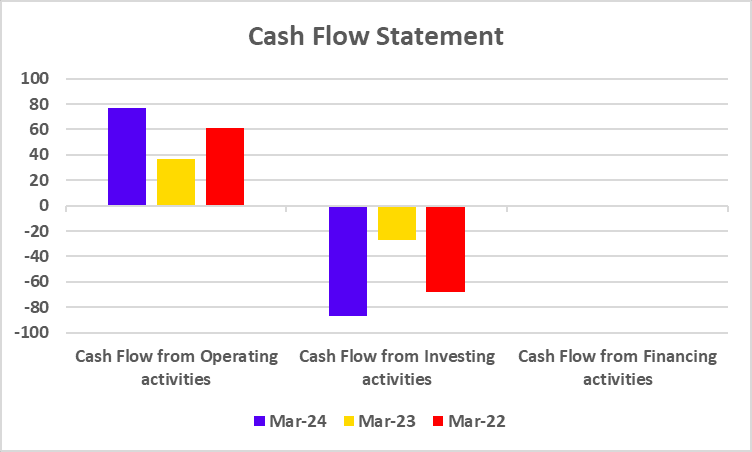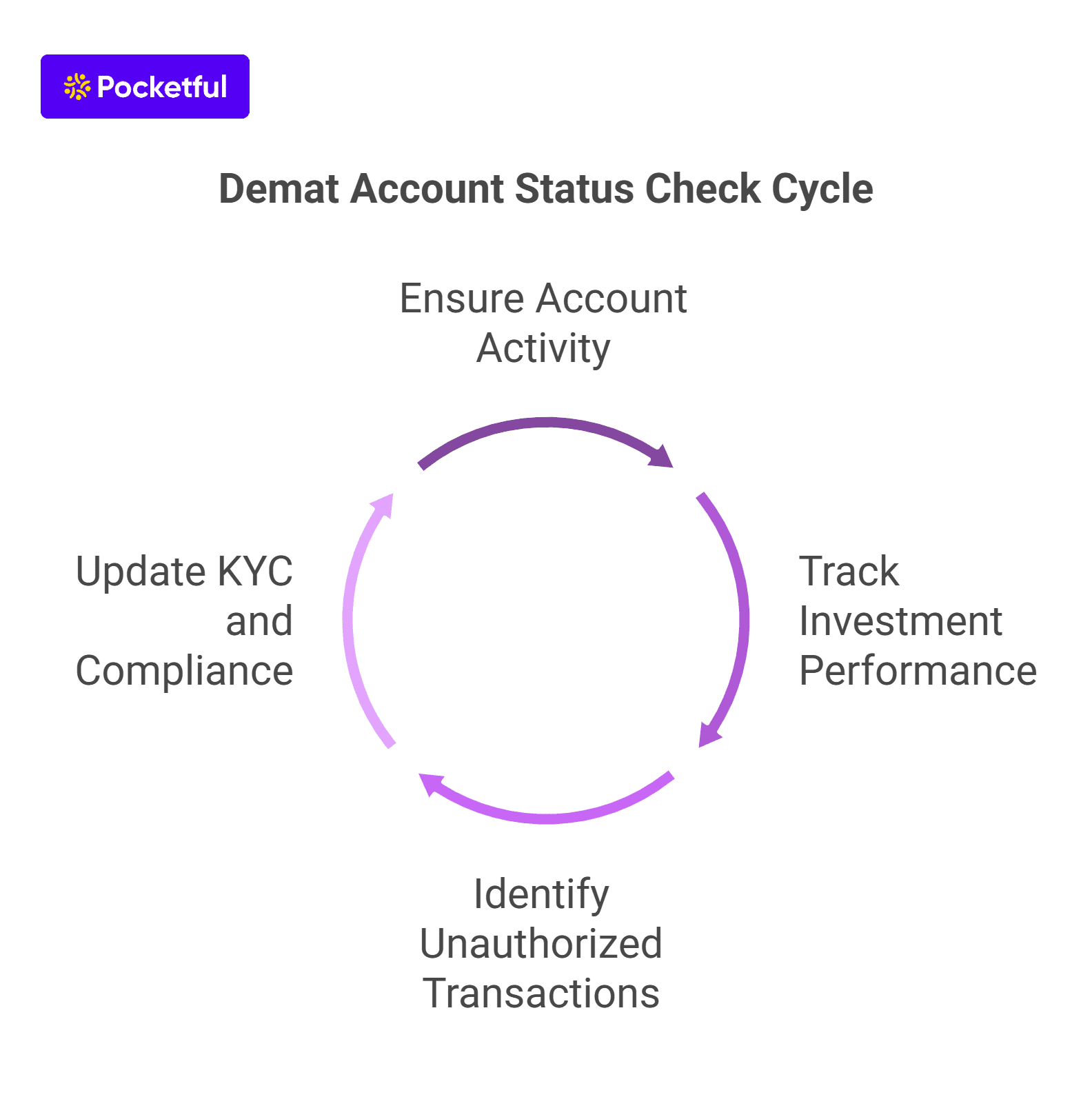Individuals invest their hard-earned money to maximize profits. A dematerialized account helps investors hold and manage securities electronically. However, there are numerous charges that one must pay brokers while investing, which makes the selection of an appropriate demat account a necessity in today’s financial markets. A lifetime free demat account is a type of Demat account that provides all the benefits of a Demat account at zero Annual Maintenance Charges (AMCs).
This blog aims to outline the concept of Annual Maintenance Charges (AMCs) and how zero AMCs can help you save money. Moreover, we will discuss the advantages of a lifetime-free demat account and the factors an individual should consider when selecting the right demat account.
What is AMC?
Annual Maintenance Charges (AMC) for a Demat account are fees charged by a depository participant (DP), like a bank or brokerage, to keep the account active. This account is used to hold and manage securities electronically, with AMCs typically charged on an annual or quarterly basis. However, some DPs may offer reduced fees for a specific duration, after which regular demat account charges may be applied.
AMCs can vary based on the type of account or DP. Additionally, many DPs waive the AMC for the first year. When selecting your depository participant, comparing AMCs is important to avoid high charges.
Top 10 Brokers Offering Lifetime Zero AMC in India
- Pocketful
- m.stock
- Dhan
- Fyers
- Groww
- Pro Stocks
- Paytm Money
- Ventura
- Firstock
- IND Money
Overview of Top 10 Brokers Offering a Lifetime Zero AMC in India
1. Pocketful
Pocketful is an emerging new-age discount broker by two brothers, Sarvam and Rishabh Goel. It is a subsidiary company of Pace Stock Broking. The founders have experience of more than 30 years. The company offers various services such as broking services in stocks and commodities etc. The company offers free account opening and annual maintenance charges, along with zero delivery fees.
2. m.Stock
m.Stock is a discount broking wing of Mirae Asset Capital Market. This was launched in the year 2022. Mirae Asset Capital Market is a subsidiary of a South Korean financial firm known as Mirae Asset Financial Group. It offers a wide range of products, including equity, futures and options, ETFs, etc.
3. Dhan
Dhan is a tech-driven discount broking platform founded in 2021. The company offers a margin for trading. Along with this, the company offers various advanced trading tools. It also offers investment in a direct mutual fund through its application. Dhan does not charge any fees for opening a demat account.
4. Fyers
This broking firm was founded in the year 2016 and has its headquarters in Bengaluru. It offers a special account for NRIs. The company name refers to “Focus Your Energy and Reform the Self” It indicates the value of the company. Both the web and the trading platform offered by the company have a unified interface.
5. Groww
The company was founded in 2016. This is a Bengaluru-based firm founded by ex-Flipkart employees. In 2017, the company launched its direct mutual fund investment platform. The company is expected to launch its IPO in the coming year.
6. Pro Stocks
The company is a discount broking vertical of Sunlight Broking Limited Liability Partnership. The founders of the company had experience of more than 25 years. The company reduces its cost of operation by reducing its branches. The company offers web and desktop-based trading software.
7. Paytm Money
It is a subsidiary company of One 97 Communication Limited, founded in 2017. The company first launched its direct mutual fund platform in 2018, and later entered into the discount broking business. The company launched its IPO in 2021. The company has its headquarters situated in Noida.
8. Ventura
Ventura Securities was founded in 1994 by two students who were studying Chartered Accountancy. Initially, it was a small setup; later, as time went on it expanded exponentially. Initially, the company was focusing on providing advisory services to HNI clients and later entered into equity broking. The company has its headquarters in Mumbai.
9. Firstock
Initially, the company was known as NCO Securities and Share Broking Private Limited, and it was rebranded as Firstock Broking in 2021. Recently, in June 2025, the company relaunched its new trading platform. The company also has a self-clearing status via the Indian Clearing Corporation Limited. The company offers its services through the CDSL depository.
10. IND Money
The company was founded in 2021 by an ex-employee of Goibibo named Ashish Kashyap. Initially the company was offering only a wealth tracking application. Later, it started offering services including brokering to loan offering, etc. Through this application, one can invest in U.S. Stocks. The company raised funding from various Venture capitalists. The headquarters of the company is situated in Gurugram.
Benefits of a Lifetime Zero AMC Demat Account
The key benefits of a Lifetime Zero AMC Demat Account are as follows:
- Cost-effective: As one is not required to pay any annual maintenance charges, it can help one save money over a period of time.
- Long-term investor: The investors who prefer to invest for a longer period of time can consider opening a lifetime zero AMC Demat account.
- Simplified Structure: A beginner investor can easily understand the lifetime zero AMC cost structure.
- No Penalty: In case of no activity in the demat account, an investor is not required to pay any penalty or any additional expenses.
Why are Annual Maintenance Charges Charged?
Below is the breakdown of why these charges are applied.
DPs use advanced technology and secure systems to manage and store digital investment records. This includes costs for data storage, transaction processing, and cybersecurity. Regular system upgrades, software maintenance, and server expenses are important for maintaining the platform’s smooth and secure operations.
DPs are also required to adhere to the regulatory standards established by major depositories such as the NSDL and CDSL. These standards involve KYC compliance, security protocols, etc., all of which incur operating costs. Meeting these obligations requires dedicated compliance teams, which increases operational costs.
AMC is used by DPs to hire people for customer support teams, enabling them to effectively assist account holders with their inquiries. Delivering prompt customer service demands considerable resources.
For brokers and DPs, annual maintenance charges provide a steady income that covers the costs of maintaining demat accounts, particularly for customers who trade rarely and produce little brokerage. AMC helps DPs provide Demat account services without depending only on brokerage fees.
How can Zero AMC Help You Save Money?
A Demat account with zero AMC can be a substantial money saver, particularly for long-term investors or individuals managing smaller portfolios. Here is how it can help you save money.
Annual maintenance charges (AMCs) generally range from INR 300 to INR 1,000, depending on the DP. Over time, this can add up, eating into investment returns. Eliminating the AMC allows investors to save on fees annually, resulting in enhanced compounding of returns.
For long-term investors who rarely trade, asset management companies or DPs impose a fixed cost that does not correspond with their minimal transaction activity. Zero AMC lets them keep their investments with no maintenance fees, maximizing long-term growth. An individual who trades frequently pays brokerage for each transaction but eliminates extra costs due to zero AMC.
Note: A Lifetime Free Demat account is certainly beneficial, but the investors must review other charges that may be applicable to open a Lifetime Free Demat account. Usually, the brokers offering such accounts charge customers an account opening fee or have higher transaction charges than competitors with nominal AMCs but lower transaction fees. Investors must thoroughly compare the services of different DPs before opening a Lifetime Free Demat account.
Why Open a Demat Account with Pocketful?
Below are some of the compelling reasons why one should open a demat account with Pocketful:
- User-friendly Design: Pocketful’s platform prioritizes simplicity, ensuring effortless navigation for both novice and seasoned investors alike.
- Seamless Experience: Users have access to a wide range of analytical tools and resources to enhance their trading strategies.
- Cost-effective Trading: Pocketful offers competitive brokerage fees, enabling users to reduce the impact of fees on returns.
- Dedicated Support Team: Pocketful provides excellent customer support through a dedicated support team, which helps the customer get timely guidance from experienced professionals.
Documents Required to Open a Demat Account
The documents needed to open a Demat account are as follows:
Proof Of Identity
- PAN (Permanent Account Number) – Mandatory
- Voter ID
- Driving License
- Passport
- Any other valid identity card issued by Central or State Government
Proof of Address
- Voter ID Card
- Driving License
- Passport
- Ration Card
- Aadhaar Card
- Utility bills, e.g., electricity bill or gas bill.
Proof of Income: (For investors who wish to trade in Derivatives – F&O/ Commodities/ Currency)
- Bank account statement for the last 6 months
- Latest Salary Slips/ Form 16 in case of salaried person
- Copy of ITR Acknowledgement
- Passport
- Copy of Net-worth Certificate issued by a Chartered Accountant
- Canceled Cheque
Advantages of Lifetime Free Demat Account
Lifetime free Demat accounts offer a host of benefits that appeal to novice and advanced investors alike. Some of the advantages are as follows:
- By waiving off annual maintenance charges, these accounts allow investors to save hundreds or possibly even thousands of rupees per year. For long-term investors, this cost-saving strategy leads to increased compounded returns, as it releases them from the burden of recurring fees annually for a lifetime.
- Lifetime free Demat accounts perfectly suit beginners and small investors. New investors can enter the stock market with small investing amounts without worrying about the annual maintenance charges.
- Lifetime free demat accounts provide an easy solution for investors who believe in passive buy-and-hold investing since they will incur the least amount of expenses. By getting rid of the annual maintenance charges, they can allow their investments to grow without recurring fees.
Tips for Choosing the Right Demat Account
Selecting the right demat account is important for efficiently managing your investments. Here are some valuable tips to help you choose the perfect demat account that suits your needs.

- Consider AMC and Other Fees: Choose brokers with low or no AMC, especially if you are a beginner or have a small portfolio. Compare transaction fees across brokers if you trade frequently, as these costs apply to every trade. Additionally, brokers may have hidden fees, such as custodian fees or extra charges.
- Ease of Online Account Management: Check whether the broker provides a user-friendly mobile application for managing your Demat account. Seek out essential features such as real-time updates, tracking of your investments, and quick execution of transactions for a seamless experience.
- Quality of Customer Service: Choose a broker that offers responsive customer support via phone, email, chat, etc., particularly if you are a beginner in need of assistance and guidance.
- Reputation and Reviews: Assess the broker’s reputation by exploring online reviews and ratings, with a focus on their reliability and transparency. Examine any grievances or concerns about service quality or undisclosed charges.
- Account Opening Process: Choose brokers with an easy and quick account opening process that includes digital onboarding and KYC verification.
Read Also: How to Open a Demat Account Online?
Conclusion
In today’s financial environment, selecting an ideal Demat account is essential for both novice and experienced investors alike. A lifetime free demat account is appealing because it lets your investments grow without ongoing Annual Maintenance Charges (AMCs). This cost-effective approach not only maximizes your investment returns but also provides an accessible entry point for those looking to begin their financial journey. When selecting a broker offering lifetime free Demat accounts, consider their transaction fees, customer support, and trading tools. Making the right choice can truly empower you to invest with confidence and clarity, bringing your financial goals well within reach. As the Indian economy continues to grow, there are numerous investing opportunities available to investors today. The use of a lifetime free demat account can help investors create a pathway to a more sustainable and rewarding investment journey.
Frequently Asked Questions (FAQs)
What is a lifetime free demat account?
A lifetime free demat account is a demat account that does not charge any annual maintenance charges (AMCs) for as long as the account is active.
Are there any hidden fees with a lifetime free demat account?
While AMCs may be waived, brokers can still charge transaction fees, pledging fees, etc. Always review the fee structure of the Depository Participant (DP) before opening an account.
Can I open multiple Zero AMC accounts with various brokers?
Yes, an investor can open multiple zero AMC Demat accounts.
Do lifetime zero AMC demat accounts provide all the benefits of a regular account?
Yes, a lifetime zero AMC demat account provides all the benefits, such as IPO application, trading, and other value-added services like a regular account.
How can a broker earn by offering a zero AMC demat account to its investors?
Zero AMC demat account broker earns revenue from brokerage charges, margin facility, along with fees for other value-added services offered by them.
Do all brokers offer a Lifetime free demat account?
No, not all brokers offer a lifetime free demat account to their investors. They generally charge a fixed fee at the end of each year or quarter for maintaining a demat account with them.
Can I hold all types of securities in a lifetime free demat account?
You can hold stocks, mutual funds, bonds, and other financial instruments in a Demat account.
Can I close my lifetime free demat account at any time?
Yes, you can close your account whenever you choose.
Why do the brokers charge AMCs?
Brokers charge AMCs to cover their operational costs, such as maintaining technological infrastructure, providing customer support, etc.







